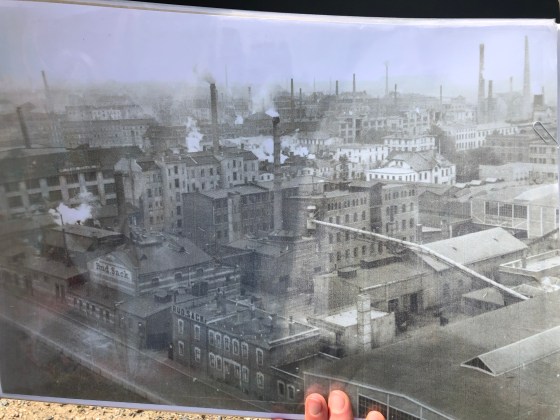At the end of June 2020 there was a very impressive meeting of our Leipzig Urban Sketcher group!

Isabel from “Gedenkstaette für Zwangsarbeit” (“Memorial to forced labor”) went with some of us to three Leipzig places where forced laborers worked. There were about 13 million forced laborers in Germany during World War 2. So actually everywhere and it was also visible for everyone when the columns moved through the cities every day. These are not the chocolate sides of our city history and if no one tells you, you just don’t know! Therefore, a big thank you to Isabel and all of the association!

In the “Stelzenhaus” you can have a wonderful meal and paddle through the summer in the Karl-Heine-Canal. Nobody thinks about forced labor and brutalities… Even if a sign still reminds of the “Verzinkerei Grohmann und Frosch” (founded in 1888).
Arsenjev Danilov (*20. 10. 1911 in Noginsk, Russia) was captured as a lieutenant in the Soviet Army in 1941 and had to work here in the highly toxic galvanizing plant without any occupational safety. When it was discovered that he was deliberately sabotaging production, he was sent to Buchenwald concentration camp on July 4, 1944.

Not far from the stilt house is the “Jahrtausendfeld” (“millennium field”), a large wasteland in the middle of the city. I always wondered why it is so desolate.

In the 40-ies and since 1881 the “Rudolf Sack Landmaschinenfabriken” (Agricultural machinery factories) stood here. During the war, instead of plows weapons were produced here and for this also 1,570 forced laborers were imprisoned (from 1942). This is what it looked like there back than.

One of these forced laborers was Hendriks Verstraaten (*20.6.1922) from the Netherlands. Isabel read us a postcard that he was able to write home. Censored, of course! But even though it was quite clear how brutal the unprotected work at the iron smelting furnaces was.

In memory of him and the many unknowns….




